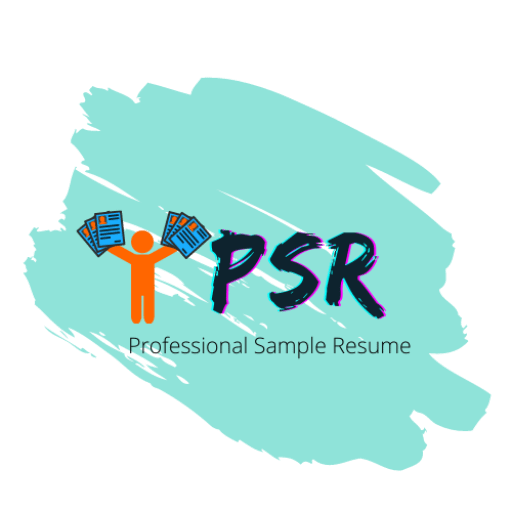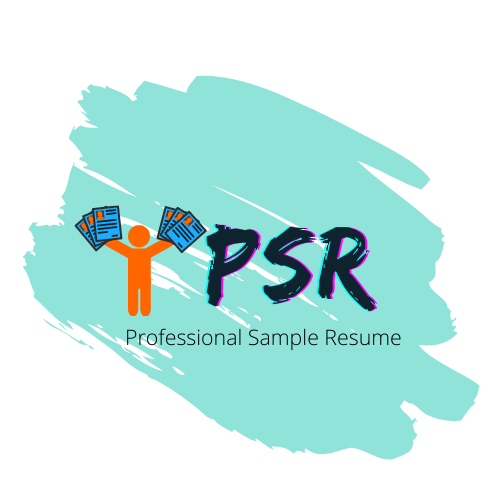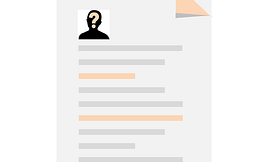Reading Lists
How To Highlight Your Achievements In Resumes
As a Lead technical recruiter, I have screened thousands of resumes so far and I have noticed that most of the candidates miss highlighting achievements in resumes.
In this blog I will share 10 tips, that can effectively showcase your achievements on your resume and increase your chances of getting hired.
To highlight your achievements in your resume, you should:
Use action verbs:
Start each bullet point with a strong action verb, such as “managed,” “implemented,” or “increased,” to show that you took initiative and made things happen. Using action verbs in your resume can help you to stand out and make a stronger impression on potential employers.
Action verbs describe the specific actions you took in your previous roles, and they can help to make your resume more dynamic and engaging. Some examples of action verbs that you can use in your resume are:
| Examples | 1. Led: Led a team, project, or initiative 2. Managed: Managed a team, project, or budget 3. Implemented: Implemented a new process, system, or policy 4. Developed: Developed a new product, service, or program 5. Improved: Improved performance, efficiency, or customer satisfaction 6. Increased: Increased sales, revenue, or market share 7. Reduced: Reduced expenses, waste, or defects 8. Created: Created a new product, service, or program 9. Trained: Trained employees, customers, or partners 10. Resolved: Resolved customer complaints, issues, or problems 11. Achieved: Achieved a specific goal, target or objective 12. Analyzed: Analyzed data, market trends, or customer needs 13. Coordinated: Coordinated efforts between teams, departments or vendors 14. Designed: Designed a new product, service, or process 15. Executed: Executed a plan, strategy, or campaign 16. Facilitated: Facilitated meetings, workshops, or training sessions 17. Maintained: Maintained equipment, systems, or databases 18. Optimized: Optimized processes, systems, or campaigns 19. Pioneered: Pioneered a new idea, concept, or solution 20. Streamlined: Streamlined processes, systems, or operations |
Make sure to use action verbs that accurately describe your responsibilities and accomplishments in your previous roles. Also, use them consistently throughout your resume and try to use different verbs to avoid repetition.
Quantify your achievements:
Use numbers, statistics, or percentages to show the scope and impact of your achievements. For example, instead of saying “managed a team,” you could say “managed a team of 10 employees and increased productivity by 20%.”
Quantifying your achievements on your resume can help to give potential employers a clear picture of the scope and impact of your accomplishments. It also helps to make your achievements more concrete and credible. Here are a few ways to quantify your achievements:
| Examples | 1. Use numbers and statistics: For example, “increased sales by 20% over a 6-month period” or “reduced expenses by $50,000 per year”. 2. Use percentages: For example, “improved customer satisfaction ratings by 15%” or “reduced absenteeism by 10%”. 3. Use time frames: For example, “completed a project ahead of schedule by 2 weeks” or “reduced turnaround time by 50%”. 4. Use dollar amounts: For example, “Generated $1 million in new revenue” or “Saved the company $50,000 in the first quarter” 5. Use specific measurements: For example, “Reduced inventory levels by 20% in a year” or “Reduced product defects from 5% to 1%” 6. Use specific milestones: For example, “Achieved the highest sales figures in the company’s history” or “Developed and launched a new product that was a hit with customers” 7. Use specific targets: For example, “Exceeded sales targets by 20%” or “Achieved a 90% customer retention rate” |
It’s also important to mention the context of the achievements, such as the size of the team you led, the size of the budget you managed, the complexity of the problem you solved, the impact of the achievement, etc.
You may also read: How to Create A Professional Resume With NO Writing Experience
Use specific examples:
Instead of making general statements, use specific examples of your accomplishments to give the hiring manager a clear picture of what you’ve done.
Using examples in your resume can help to give potential employers a clear picture of your skills and experience, and it can also make your resume more engaging and memorable. Here are a few ways to use examples in your resume:
| Examples: | 1. Use specific examples to illustrate your skills: For example, “Demonstrated strong leadership skills by leading a team of 12 people to a successful project completion” 2. Use examples to show the impact of your work: For example, “Implemented a new customer service process that resulted in a 25% increase in customer satisfaction” 3. Use examples to demonstrate your problem-solving abilities: For example, “Resolved a production issue that had been plaguing the company for months, increasing output by 50%” 4. Use examples to show your achievements: For example, “Achieved a sales increase of 20% by implementing a new marketing strategy” 5. Use examples to show your ability to work in a team: For example, “Collaborated with cross-functional teams to develop a new product that increased revenue by 15%” 6. Use examples to show your ability to work under pressure: For example, “Managed a project with a tight deadline, delivering it on time and under budget” 7. Use examples to show your ability to adapt to change: For example, “Successfully navigated a company merger, consolidating two departments into one cohesive unit” |
Tailor your achievements to the job:
Make sure the accomplishments you highlight on your resume are relevant to the job you’re applying for.
Tailoring your achievements to the job you are applying for is an important step in creating an effective resume. This will help to show potential employers that you have the skills and experience that they are looking for. Here are a few tips on how to tailor your achievements to the job:
| Examples | 1. Review the job posting: Look for keywords and phrases that indicate the skills and experience that the employer is looking for. Incorporate these into your resume by highlighting achievements that demonstrate those skills and experience. 2. Match your achievements to the job requirements: For example, if the job posting mentions a requirement for project management experience, highlight achievements that demonstrate your project management skills. 3. Use language from the job posting: Use the same language and terminology that the employer uses in the job posting. This will help to show that you have a good understanding of the job and that you have the relevant skills and experience. 4. Highlight achievements that are relevant to the job: Select achievements that are most relevant to the job you are applying for. This will help to show that you have the right experience and skills for the job. 5. Use industry-specific examples: If you are applying for a job in a specific industry, use examples that demonstrate your experience and skills in that industry. 6. Show how your achievements have impacted the company: Provide specific examples of how your achievements have made a positive impact on the company. This will help to demonstrate your value to the employer. |
Show the results:
Highlight the results of your efforts and how they benefited the organization. Showing the results of your achievements in your resume is an effective way to demonstrate your value to potential employers.
Here are a few tips on how to show the results of your achievements in your resume:
| Examples | 1. Use specific, measurable, and relevant data: Use numbers, statistics, and other data to quantify the results of your achievements. This will help to show the impact of your work and make it more convincing. 2. Use action verbs to describe the results: Use strong action verbs to describe the results of your achievements. For example, “increased”, “improved”, “saved”, “reduced”, etc. 3. Use before and after comparisons: Show the results of your achievements by comparing the situation before and after your actions. For example, “Increased sales by 25% through implementing a new marketing strategy” 4. Show the impact on the company: Highlight the impact of your achievements on the company. For example, “Implemented a new customer service process that resulted in a 25% increase in customer satisfaction” 5. Use real-world examples: Provide examples from your past work experience that demonstrate the results of your achievements. 6. Use visuals: Use graphs, charts, and diagrams to demonstrate the results of your achievements in a clear and visually appealing way. |
Use a summary:
A summary section at the top of your resume is a great way to quickly highlight your most relevant achievements and skills.
A summary statement is a brief, concise statement that appears at the top of a resume and provides an overview of the candidate’s qualifications, skills, and experience.
Including a summary statement in your resume can be an effective way to grab the attention of potential employers and help them quickly understand how you can benefit their company. Here are a few tips on how to use a summary statement in your resume:
| Examples | 1. Keep it short: A summary statement should be brief and to the point. Aim for 3-4 sentences that provide a quick overview of your qualifications and experience. 2. Tailor it to the job: Tailor your summary statement to the job you are applying for by highlighting the skills and experience that are most relevant to the position. 3. Use keywords: Use keywords from the job posting in your summary statement to show that you have the skills and experience that the employer is looking for. 4. Use action verbs: Use action verbs to describe your qualifications and experience. This will help to make your summary statement more engaging and attention-grabbing. 5. Show your value: Use your summary statement to show how your qualifications and experience can benefit the company. 6. Be Specific: Be specific about what you can offer to the company, do not make general statements. 7. Mention any certifications or awards: Mention any relevant certifications or awards you have received. 8. Use a professional tone: Use a professional tone in your summary statement, avoiding any informal language. |
You may also read: 9 Tips and Examples for Writing a Killer Career Objective in Resume
Use industry-specific keywords:
Use keywords relevant to the job and industry to make your achievements easily searchable by hiring managers and applicant tracking systems.
Using industry-specific keywords in your resume can help to increase your chances of getting noticed by potential employers. These keywords help to demonstrate your understanding of the industry and the specific skills and experience that are required for the job. Here are a few tips on how to use industry-specific keywords in your resume:
| Examples | 1. Research the industry: Research the industry you are applying for and identify the keywords and phrases that are commonly used. 2. Use job postings as a guide: Look at job postings for similar positions and use the keywords and phrases that are used in those postings in your resume. 3. Use industry-specific jargon: Use industry-specific jargon in your resume to demonstrate your knowledge and understanding of the industry. 4. Use action verbs: Use action verbs that are specific to the industry to describe your qualifications and experience. 5. Use specific software and tools: If the industry requires the use of specific software or tools, be sure to mention your experience with them in your resume. 6. Tailor your resume: Tailor your resume to the specific industry and position you are applying for by highlighting the skills and experience that are most relevant. 7. Use keyword-rich phrases: Use keyword-rich phrases in your resume that demonstrate your skills and experience, for example, “experienced in Agile methodologies” 8. Be consistent: Be consistent in the use of industry-specific keywords throughout your resume, including in your summary, job titles, and job descriptions. |
Start with the most recent and relevant:
Highlight your most recent and relevant achievements first, the hiring manager will be more likely to remember them.
When creating your resume, it’s important to start with the most recent and relevant information. This helps to ensure that the most important information is easily accessible to potential employers and that they can quickly understand your qualifications and experience. Here are a few tips on how to start with the most recent and relevant information in your resume:
| Examples | 1. Start with your current or most recent job: Begin your work experience section with your current or most recent job, and work backwards in time. 2. Use reverse-chronological order: Use reverse-chronological order when listing your jobs, so that the most recent job comes first and the oldest job comes last. 3. Highlight relevant experience: Highlight the most relevant experience and skills for the job you are applying for. 4. Focus on the last 10-15 years of experience: Many employers are only interested in the last 10-15 years of experience, so focus on that. 5. Use action verbs: Use action verbs to describe your qualifications and experience. This will help to make your resume more engaging and attention-grabbing. 6. Show your results: Use specific examples of your accomplishments, quantifying the results you have achieved. 7. Tailor your resume: Tailor your resume to the specific job you are applying for by highlighting the skills and experience that are most relevant to the position. 8. Be concise: Be concise in your descriptions, don’t use too many words to describe your experience. |
Show progression:
Show how you have progressed in your career by highlighting your achievements over time, it will show your growth and advancement in your field.
Showing progression in your resume can help to demonstrate to potential employers that you have a clear career path and that you have actively worked to advance your skills and experience. Here are a few tips on how to show progression in your resume:
| Examples | 1. Highlight career advancement: Highlight any promotions or advancements you have received in your previous jobs. 2. Show increased responsibility: Show how your responsibilities have grown over time and how you have taken on more challenging roles. 3. Use specific examples: Use specific examples of how you have progressed in your career, such as by taking on new projects or leading teams. 4. Highlight any relevant certifications or education: Show that you have continued to develop your skills and knowledge through education or professional development. 5. Show your results: Use specific examples of your accomplishments, quantifying the results you have achieved. 6. Tailor your resume: Tailor your resume to the specific job you are applying for by highlighting the skills and experience that are most relevant to the position. 7. Show your career aspirations: Use your resume to show your career aspirations and how you plan to progress in your career. 8. Show your leadership skills: Highlight any leadership skills you have developed over time and how you have used them to achieve results. |
Use a consistent format:
Use a consistent format for your bullet points and make sure they are easy to read and visually appealing.
Using a consistent format in your resume can help to make it more visually appealing and easy to read for potential employers. Here are a few tips on how to use a consistent format in your resume:
| Examples | 1. Choose a layout: Choose a layout that is easy to read and that highlights your qualifications and experience. 2. Use consistent fonts and font sizes: Use consistent fonts and font sizes throughout your resume to ensure that it is easy to read. 3. Use consistent spacing: Use consistent spacing throughout your resume to ensure that it is easy to read and visually appealing. 4. Use bullet points: Use bullet points to list your qualifications and experience, this will make your resume more readable. 5. Use sections: Divide your resume into sections, such as “Summary,” “Experience,” “Education,” “Skills,” and “Certifications,” to make it easy to read and navigate. 6. Use consistent formatting: Use consistent formatting throughout your resume, such as bolding or italicizing certain text, to make it visually appealing and easy to read. 7. Keep it simple: Keep the format of your resume simple and easy to read, Avoid using too many images, or backgrounds that can make it hard to read. |






